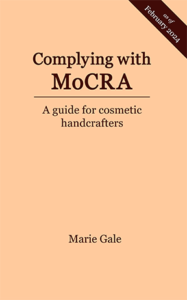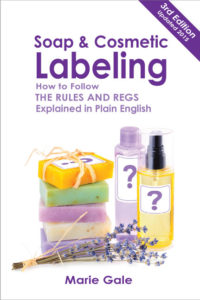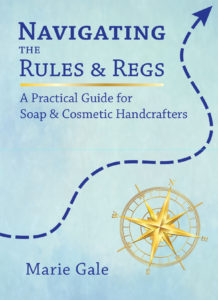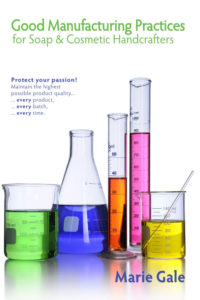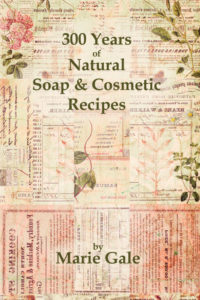Helping soap and cosmetic handcrafters navigate the rules and regs.

Hi, I’m Marie Gale.
Helping People Understand What’s Required.
For over 15 years I’ve been researching and following the world of laws, regulations, standards and guidelines for the handcrafted soap and cosmetic industry. What started as my personal quest to understand soap and cosmetic labeling for my own products has grown into a deep understanding of the many regulations that handcrafted soap and cosmetic makers are subject to.
My personal passion to assist others to understand and follow the labeling and other requirements grew out of all that research. If I had my way, no handcrafter would ever experience the stress and heartache of unwittingly running afoul of the the laws and regulations.
There is peace of mind in knowing that you are compliant with the applicable regulations. I’m here to help you achieve that stress-free relationship with your products and your business.
Whether you know it or not, you’ve been an invaluable resource for me throughout our years in business as I’ve relied on your many books whenever I have questions. I’ve recently purchased “Navigating the Rules & Regulations” and am going through it with tabs & a highlighter and am learning more than I ever expected. — Julia
SERVICES
Choose the right solution to fit your needs
DIY with Blog Articles & Videos
FREE
This blog has much of the basic information you need to get your labels right and comply with other regulations. Here are some pages to get you started:
If you are wondering about requirements in your state, check the State Agencies page. You can also search by subject for related articles and videos.
Label Review
$125 per label
If you want another set of (experienced) eyes on your label to make sure it meets all the requirements, a label review is a good choice. A Label review checks your label against the pertinent regulations. You get a checklist of showing if corrections are needed (or not), along with documentation to help you understand the requirements. Label reviews take about a week. Once your review is complete, you can send the revised label and I’ll take a look to make sure everything is in order.
I wanted my labels to be as close to compliant as I could get them. I took advantage of your label review service and can’t thank you enough for your expert advice. It was money well spent! — N.M.
Consulting
$100 – $125 per hour
Consulting is the tailor-made solution to address whatever your concerns are with your labeling, GMP, MoCRA compliance, safety substantiation, and the like. Consulting can be as simple as just answering the questions you have by email, phone or online meeting, or it can cover reviewing all your labels, ingredient declarations, website copy, safety substantiation documentation, and good manufacturing practices. It’s your call – I’m here to help with what you need.
I speak on behalf of the entire team that we are all very appreciative of your work in helping us grow our brand. It is a big step for us, and you have been instrumental in making that a reality. Thank you for your help. — D.C..
Latest blog articles
-
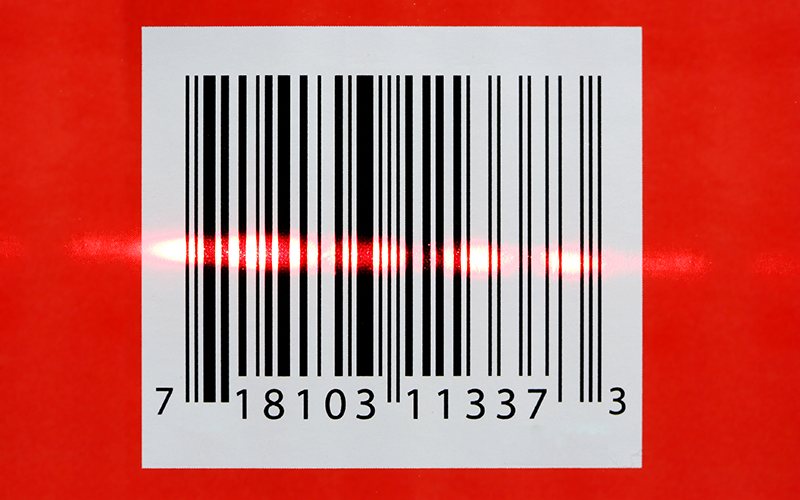
Getting UPC Codes on Your Labels
One of the things that you often see on soap and cosmetic labels are bar codes. They are not required by regulation, but can make a big difference in where and how your products can be sold. Many of the large stores or retail chains use UPCs (“Universal Product Codes”) on all their products, both […]
-
Packaging & Labeling – More Than Just the Requirements
When we talk about soap and cosmetic labeling, very often the discussion is about the regulations and the requirements. It’s true that the package label must contain very specific elements, but what about the rest of the label content? What about the “labeling,” defined as the materials and text that goes with the product (like […]
-
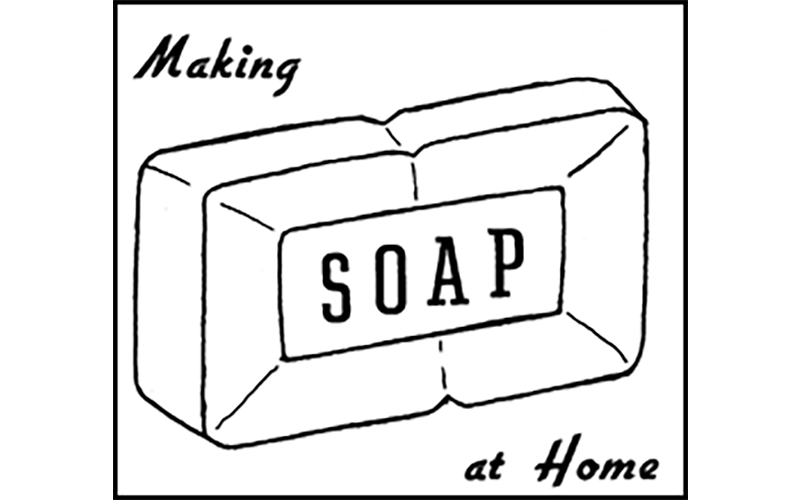
Making Soap, 1955 Style
I recently found a marvelous brochure, Making Soap at Home from February, 1955. Prepared by Irene Crouch, Extension Agent Home Management, and published by the Extension Service (North Dakota), this little document outlines how to make soap at home. “A thrifty housewife can save many dollars a year by making soap of good quality.”
-
Quick Labeling FAQ Updated
I’ve just updated the Quick Labeling FAQ on my website. It’s easier to follow, covers the basics more clearly and is updated to take into account recent changes made to the FDA website.
-

Insect Repelling Soap and Cosmetics
Updated September 25, 2017 Several people have asked me recently about soaps and cosmetics that repel insects. What are the regulations and how do they get labeled? Once there’s a “pesticide” claim (that is, that the product repels insects), the product falls under the jurisdiction of the EPA, under the authority of the Federal Insecticide, […]
-
What About “Natural”?
Can you call a cosmetic product “natural”? And what does that really mean, anyway? Nowadays, there are so many products of all types being marketed as “natural” it’s getting crazy! I recently saw some piece of furniture marketed as “natural” because it was made (mostly) of wood. Where does it end? The first thing to […]
-
FDA Cosmetic Website Updated
The FDA recently updated the cosmetic section of their website and added some new pages that clarify regulations, particularly for small manufacturers of soap and cosmetics. Some of the most commonly asked questions are very clearly answered in FAQ format.
-
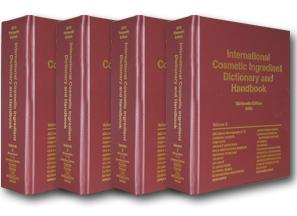
Ingredient Names From 1977 Still Good?
The Code of Federal Regulations specifies where to find the names by which cosmetic ingredients should be identified in the ingredient declaration on a cosmetic. First are any names “established by the Commissioner” (there are a few) and then the CTFA Cosmetic Ingredient Dictionary, Second Ed., 1977. After some searching, I was finally able to […]
-
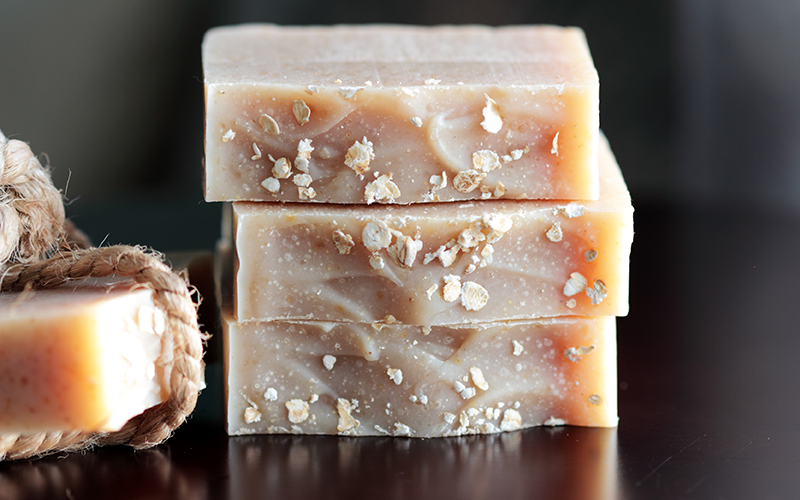
Using an Ingredient Name in a Product Name
Over the years, one small section in my book, Soap and Cosmetic Labeling, has probably generated the most question and online discussion over any other. That section covers “Using an Ingredient in the Name” and discusses the FDA regulations that prohibit the use of the name of one ingredient in the name of the product […]
-
Getting Back in the Groove
They say that when you fall off a horse, the best thing is to get right back on. The rationale is that the longer you delay, the harder it is to overcome any fear you have from falling off in the first place. In other words, you lose your groove. Well, I can tell you […]
-
More on “Lip Balm”
Last year I wrote a post, “Drug Claims and Lip Balm” which discussed the use of the phrase “lip balm” as the identity of a product. Unlike “lipstick” or “lip gloss,” the specific term “lip balm” is cited in the over-the-counter drug monograph for “skin protectants” as one of the approved ways to identify a […]
-

FDA Issues New Draft of Cosmetic Good Manufacturing Practices Guidelines
The FDA recently announced that they have issued a new draft guidance on good manufacturing practices for cosmetic products. This new draft is an update to the existing “Cosmetic Good Manufacturing Guidelines/Inspection Checklist“. According to the Introduction: “This document provides guidance to industry and other stakeholders on the FDA’s current thinking concerning what constitutes Good […]
